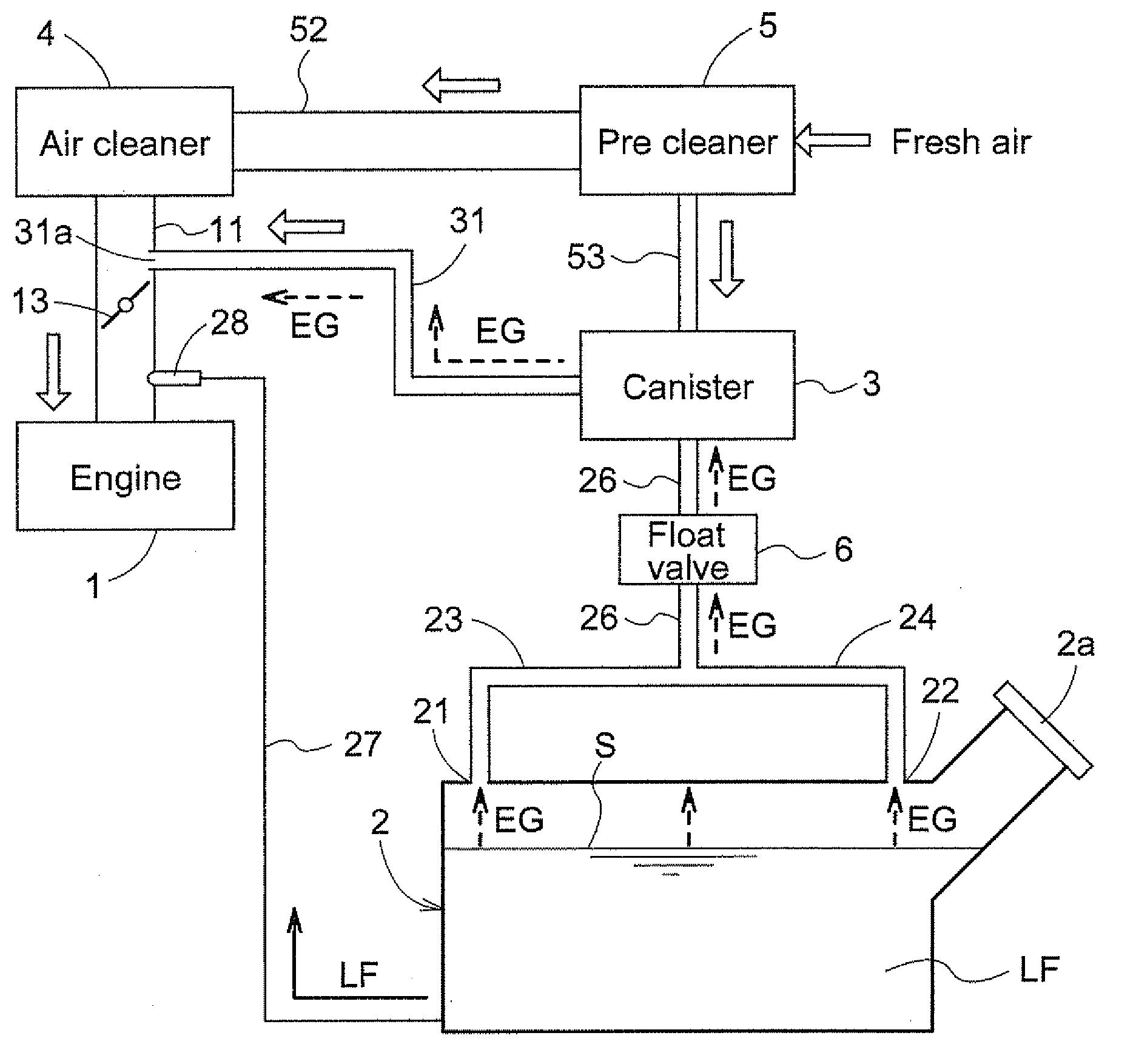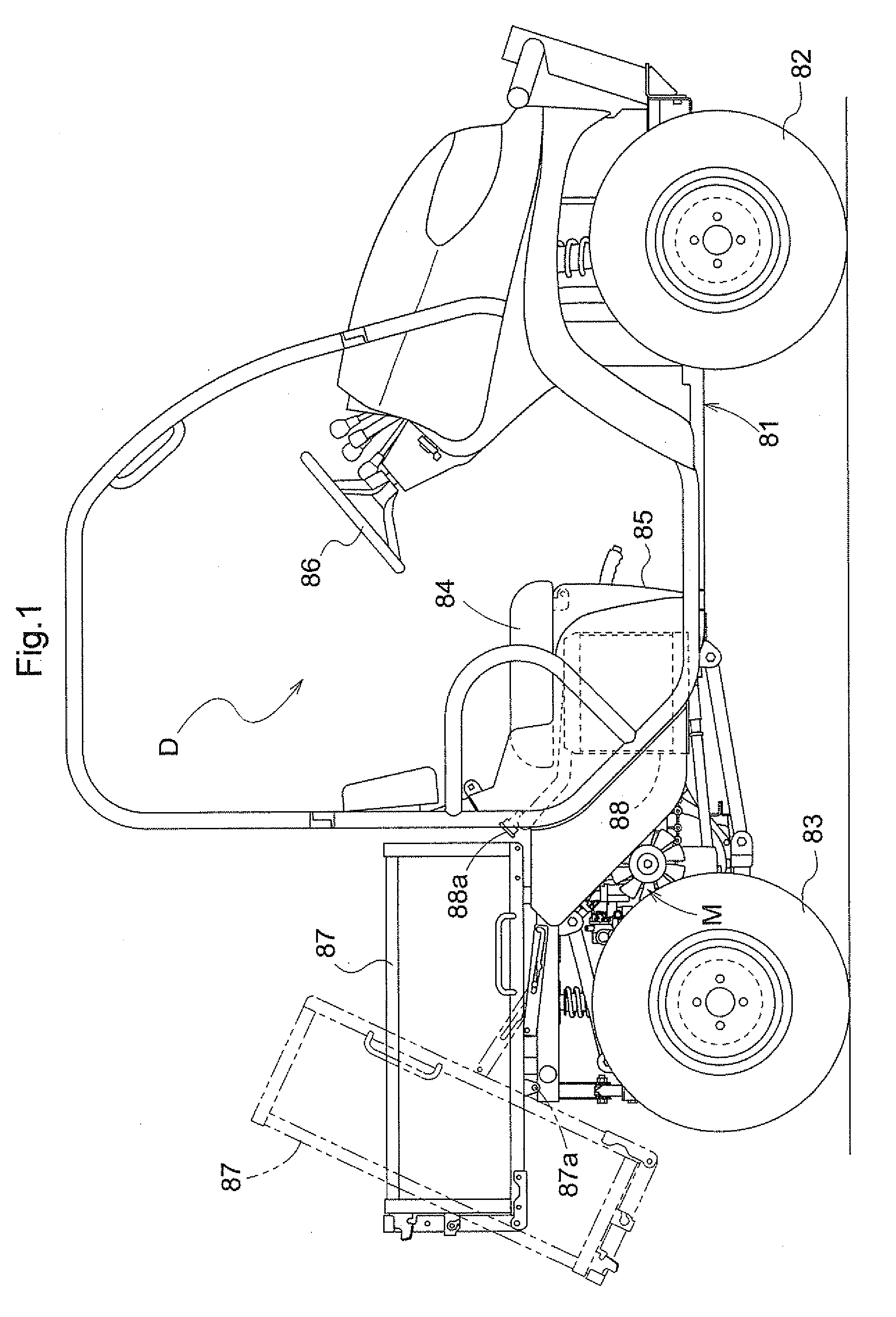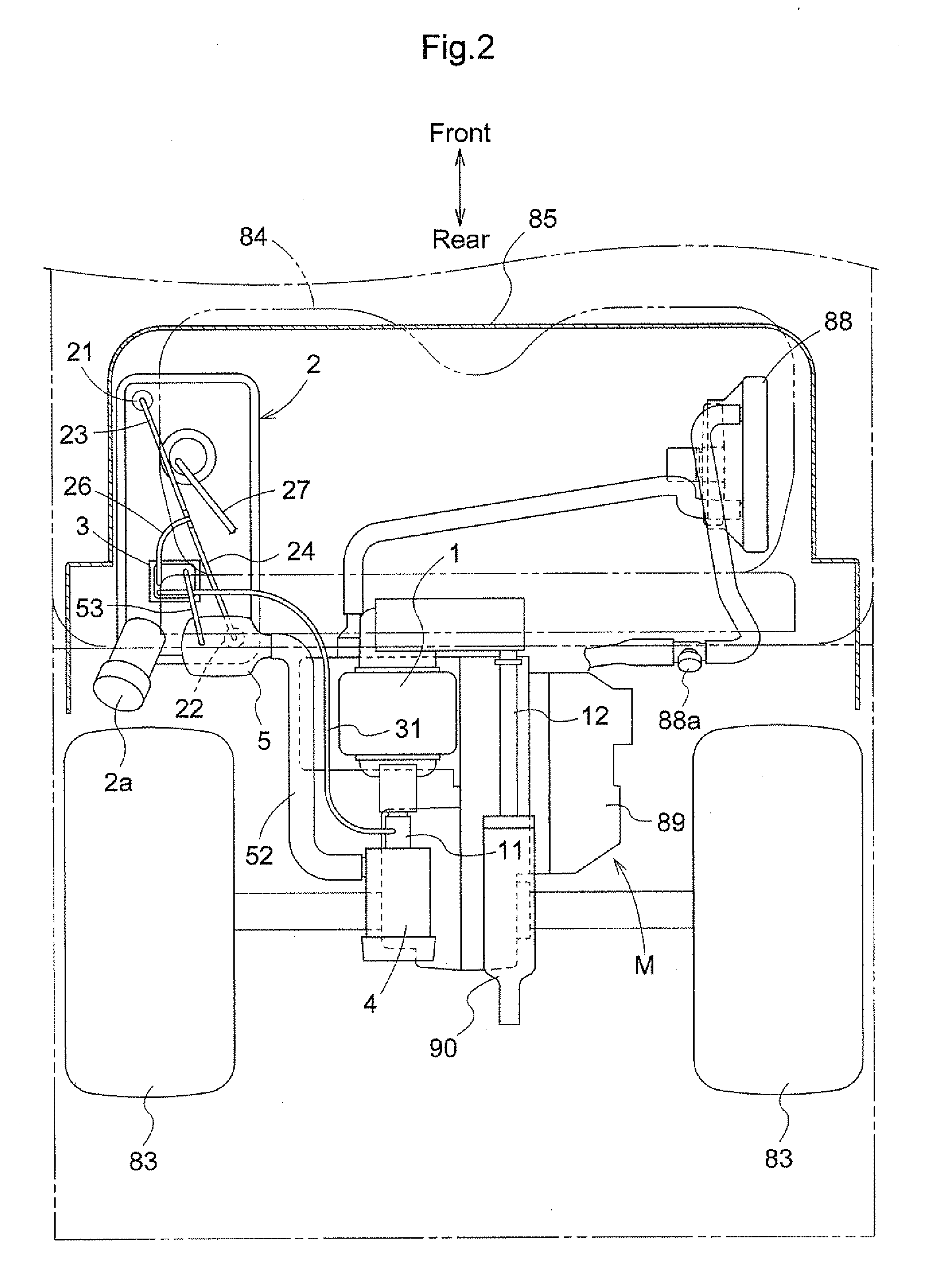Fuel System for Vehicle with Engine
a fuel system and engine technology, applied in the direction of condensed fuel collection/return, charge feed system, non-fuel substance addition to fuel, etc., can solve the problem that 3/b> may disadvantageously be soaked with liquid fuel lf, and achieve simple and low-cost structure and high reliability
- Summary
- Abstract
- Description
- Claims
- Application Information
AI Technical Summary
Benefits of technology
Problems solved by technology
Method used
Image
Examples
Embodiment Construction
[0032]Hereinbelow, preferred embodiments of the present invention will be described with reference to the accompanied drawings. Features of one embodiment can be used in combination with features of another embodiment, and such combinations are encompassed in the scope of the present invention, as long as the combination does not create inconsistency.
[0033]Hereinbelow, an embodiment of the fuel system according to the present invention will be described with reference to the drawings, while illustrating a utility vehicle (hereinafter, simply referred to as “UV”) having an engine using gasoline as fuel, to which the fuel system is applied.
(Entire Configuration)
[0034]As shown in FIGS. 1 and 2, the UV has a pair of right and left steerable front wheels 82 and a pair of right and left rear wheels 83. The front and rear wheels 82,83 are disposed on front and rear portions of a body frame 81, respectively. Between the front and rear wheels 81,82, a driver's cabin D and a motor part M are ...
PUM
 Login to View More
Login to View More Abstract
Description
Claims
Application Information
 Login to View More
Login to View More - R&D
- Intellectual Property
- Life Sciences
- Materials
- Tech Scout
- Unparalleled Data Quality
- Higher Quality Content
- 60% Fewer Hallucinations
Browse by: Latest US Patents, China's latest patents, Technical Efficacy Thesaurus, Application Domain, Technology Topic, Popular Technical Reports.
© 2025 PatSnap. All rights reserved.Legal|Privacy policy|Modern Slavery Act Transparency Statement|Sitemap|About US| Contact US: help@patsnap.com



